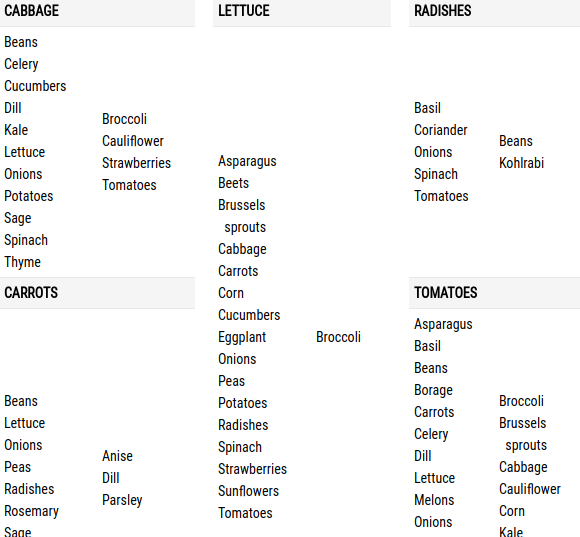Did you know that tomatoes hate cucumbers? Consider companion planting.
While they might taste great together in a salad, tomato plants dislike growing in close proximity to any member of the cucurbit family, which includes cucumbers.
Tomatoes love carrots and basil, however – so planting these together will actually make them each grow more vigorously!
Sounds hokey? The idea that some plants and plant families are “friends” with others and grow better together is called companion planting, and it’s been around since the dawn of food cultivation.

Planting your veggies in neat rows with labels is satisfying to the eye, and easier to harvest. However, when we look to nature, we don’t see rows anywhere, nor do plants all grow clumped up in groups of the same thing together.
Mimicking nature’s biodiversity might make your garden look messy, but it’s been proven to help each plant to grow better. Plants in a polyculture are more resilient and tend to have fewer losses from insects or disease.
Things like carrots, dill, parsley, and parsnip will attract praying mantises, ladybugs, and spiders. These predator species of insects feast on the bugs who like to ruin your tomatoes, so it’s a win-win for the tomatoes (and you)!

This is also why it’s a great idea to interplant flowers with your vegetable plants–particularly marigolds and nasturtiums. These flowers will attract and feed beneficial pollinator insects, which will increase the fruit-set of many squashes, peas, cucumbers, tomatoes, and other veggies. Nasturtiums are edible flowers and look lovely in salads, and their nutritious root, called mashua, used to be a staple crop in South American regions.
Finally, some plants simply don’t get along, and won’t do well when they’re forced to share root space. Peppers and beans don’t like being next to each other, nor do potatoes and tomatoes (both members of the nightshade family). Peas prefer being far away from onions, and lettuces do not like to be near broccoli plants.
Here’s a great list of plants that grow well together as garden friends. Or, you can grab a copy of the Old Farmer’s Almanac.

To learn more about companion planting, check out the longtime bestseller, Secrets of Companion Planting, and the more recently published book, Great Garden Companions.
Looking for information on how to grow potatoes? Check this link from The Green Pinky for a guide!
Read More: The Five Most Nutritious Vegetables Varieties For The Home Garden






